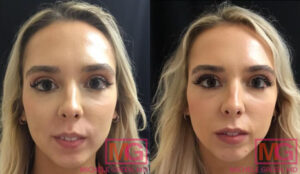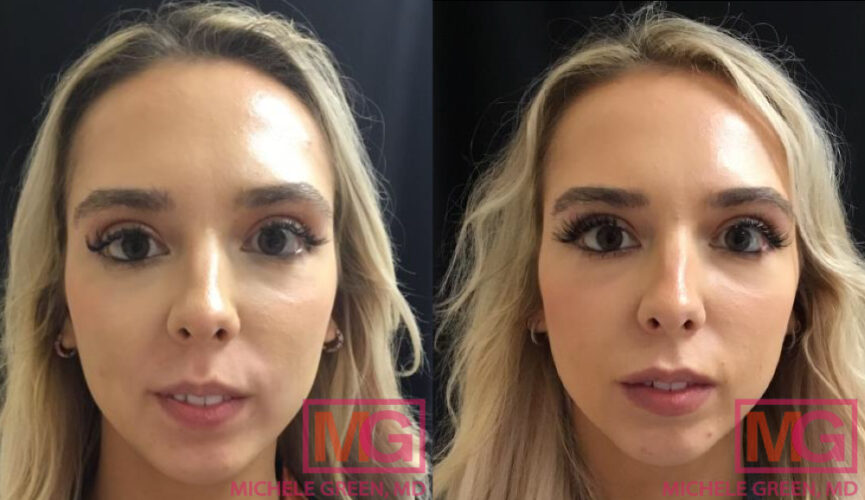Women are increasingly seeking lip fillers as a way to enhance their facial appearance. A combination of societal beauty standards and personal motivations often influences this decision.
Choosing Lip Fillers San Diego to perform the procedure is important. Ideally, it should be a dermatologist or plastic surgeon specializing in injectable treatments.

The lips are a key feature on the face and one that many people notice almost immediately. Whether you want to correct the shape of your lips or simply enhance them with a little extra volume, lip fillers can create natural-looking results that will boost your confidence without risky surgery. The trick, of course, is to find the right dermal filler for your needs and to choose an expert injector who will know how to use it in a way that looks natural.
The best fillers are hyaluronic acid (HA)-based and made of a naturally occurring substance found in the body. They work by drawing water into the area, which makes it look plumper and fuller. Injectable HA is also popular for the eyes and other areas of the face, and it can be used on both men and women of all ages and skin types.
Hyaluronic acid-based fillers are ideal for lip enhancement because they can be adjusted quickly and easily to meet your specific needs. In addition, HA is completely safe for all patients, including those with a history of allergies or sensitivities. During a consultation, your plastic surgeon will help you decide how much filler to add and what results you are looking for. They will take into account the size and color of your existing lips as well as your facial structure to ensure you get the most natural-looking results possible.
Choosing the right filler for your lips will depend on your personal goals and anatomy, but there are three kinds of fillers that tend to produce the most natural-looking results. These include Restylane Kysse, Juvederm Volbella and Juvederm Ultra XC. Each of these fillers is injected into the lips using a fine needle that creates a very small scar afterward. This scar tissue will eventually dissolve, and the resulting dermal filler will blend in naturally with your natural tissues.
Of these three, Volbella is the most commonly used for the lips, and it’s often chosen because it’s designed to create a more natural-looking contour. The soft-tissue filler is formulated with a smaller particle size and more flexible gel than other dermal fillers, making it ideal for delicate lips that need to appear healthy and natural. The formula also contains lidocaine, which makes the procedure much more comfortable for the patient.
Lip fillers are a commonplace cosmetic treatment. Just say the word, and most people will immediately picture a lineup of Instagram girls with obviously tweaked pouts. But the truth is that this popular minimally invasive procedure is far more subtle than you might think. It is a way to reshape and improve on the natural shape of your lips, allowing you to achieve a more youthful appearance without looking overfilled or unnatural.
The most common types of lip fillers are hyaluronic acid-based fillers such as Juvederm and Restylane. These fillers are very safe and have been approved by the FDA to be injected into the body for cosmetic purposes. While these fillers are incredibly safe, it is important to choose an experienced plastic surgeon who is knowledgeable in the intricacies of this type of injectable.
A quality filler will be injected in such a manner that the lip’s natural contour is preserved. A qualified physician will not be willing to overfill the lips as this can create a duck-like appearance.
Tweakments are a big trend in the beauty industry right now, and they are used to address everything from asymmetry of the eyebrows to unwanted fine lines around the eyes or a bump on the nose to thinning lips or dull skin quality. These tweakments are done with super-small amounts of filler that will give you a subtle result that will highlight the best parts of your face and hide the less desirable areas.
Many women are seeking a ‘tweakment’ because of aging or lifestyle factors like smoking, resulting in the loss of the thinnest layer of skin on their face. Fortunately, a ‘tweakment’ is the perfect solution for these patients because it will not require general anaesthetic or the downtime associated with surgery.
The bottom line is that lip fillers are a great option for enhancing your overall appearance and boosting your confidence. They are a quick, convenient, and affordable treatment that will look natural. The best way to find out if it is right for you is to book a consultation with a highly-trained specialist.
Lip fillers are a great option for women who want to enhance their lips without getting a permanent procedure. They also have the advantage of being less expensive than lip implants. However, it’s important to find the right injector and clinic that are qualified. You should also do a lot of research to make sure you find the best lip filler for your specific needs. You should also ask your doctor about the aftercare to avoid bruising and swelling.
Many women are unhappy with certain aspects of their face and feel that they need to improve their appearance. This can affect their self-confidence in both professional and personal situations. Lip fillers offer a quick and easy solution to help boost their confidence without the need for surgery. There are a variety of different lip fillers on the market, but the most common is hyaluronic acid, which is naturally produced by the body. Some of the best-known products include Juvederm, Restylane, and Volbella.
During a consultation, the specialist will examine the client’s facial shape and structure to decide where the filler should be placed. They will then use a local anesthetic or topical medication to numb the area. They may also apply ice to reduce pain and bruising. The filler is then injected using fine needles into the desired area. The procedure is usually over in about 30 minutes, and you will be able to go home soon after.
After the injections are complete, the specialist will massage the area and apply ice to reduce the chance of bruising and swelling. They will also tell you not to exercise, get a facial or massage, or do any other activities that could increase blood flow to the area. This is to allow the filler to settle and look natural.
Some people may need more than one syringe of filler to achieve the desired results. The cost of this will vary and will be quoted by the clinic or doctor. It is advisable to speak with a few specialists before deciding which one will work best for you.
Many women are happy with their facial features and want a little more definition or fullness to their lips. This is where lip fillers come in. They provide a subtle and natural enhancement that can help you feel more confident in professional and social situations. It’s an easy way to improve the appearance of your face with minimal downtime.
The best dermal fillers used for lip augmentation are those made of hyaluronic acid, a naturally-occurring substance found in the body that hydrates the skin. These include Juvederm, Restylane and Belotero. They’re also less likely to cause bruising than other types of fillers. A highly-trained and experienced injector will know exactly where and how much to use for your particular needs. They will look at the shape and proportions of your mouth, the muscular movements of your lips, and how they interact with surrounding tissue. This knowledge is crucial in achieving a natural-looking result.
Some patients want more all-over volume, while others are looking for a specific area to enhance, such as the Cupid’s bow or the philtrum. Lip fillers can also help minimize fine lines around the mouth and reduce lipstick bleeding.
Another option for achieving more fullness is fat grafting. This is usually performed by a dermatologist or other medical specialist under local anesthesia. It involves extracting the fat cells from one or both lips and placing them in the desired area of the mouth. The results can be permanent, but they do require maintenance.
It’s important to find a board-certified plastic surgeon, facial cosmetic surgeon or dermatologist who specializes in lip filler treatment. According to 740 Park Plastic Surgery’s Maman, non-board-certified professionals who are not trained to inject dermal fillers can be more likely to cause severe complications. This could include family practitioners, dentists and gynecologists.
Lip fillers are an excellent treatment for a woman who wants to make her mouth look more defined without the dramatic effects of a swollen lip. They can be a subtle and easy solution to achieve the shape that you desire, and they’re available to women of all ages who are looking for a boost in self-confidence.



